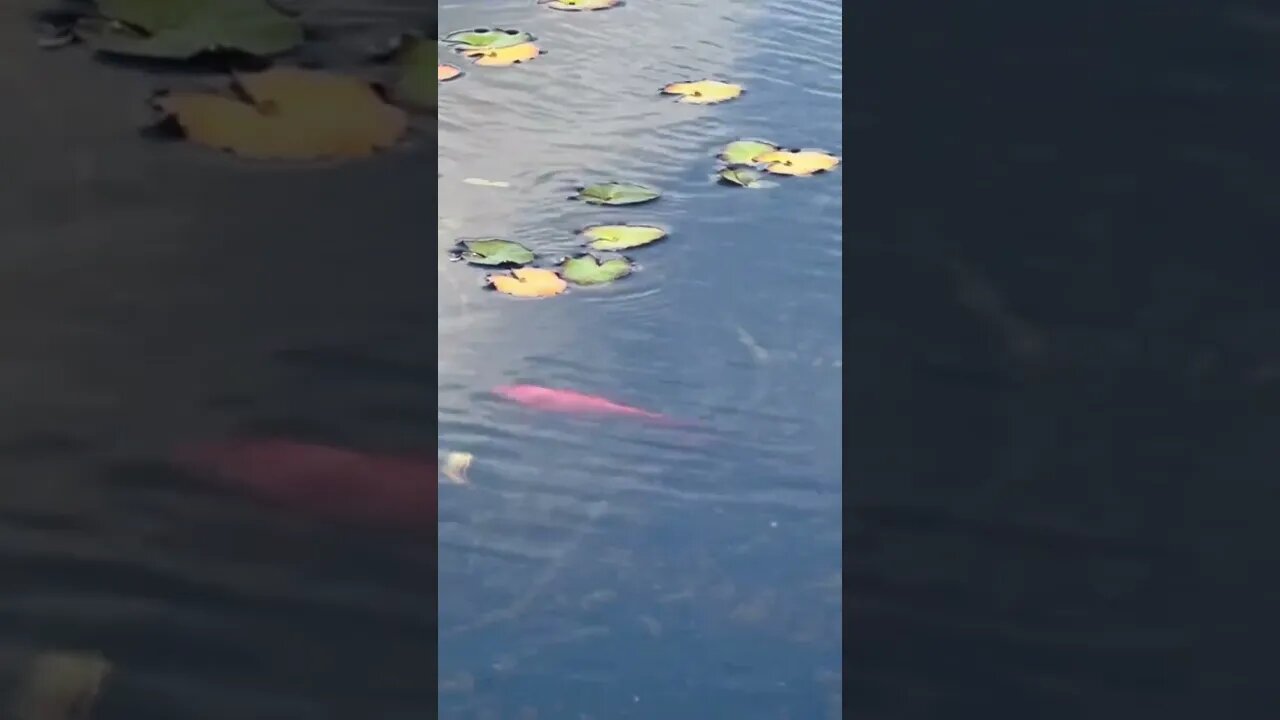Premium Only Content

Everything about the Water Lily
#waterlily #gordonlightfoot #circleofsteel
This video is dedicated to Gordon Lightfoot a Canadian folk singer who passed away in May 2023. The name of the song is Circle of Steel https://youtu.be/--QaFL_eXeM
The water lily, also known as the lotus, is a beautiful aquatic plant that belongs to the family Nymphaeaceae. It is known for its vibrant and fragrant flowers and lily pads that float on the water's surface. Here is everything you need to know about water lilies:
Habitat: Water lilies are primarily found in freshwater environments, such as ponds, lakes, and slow-moving rivers. They prefer calm waters with minimal wave action.
Types of Water Lilies: There are two main types of water lilies:
a. Hardy Water Lilies: These water lilies are well-adapted to colder climates and can survive freezing temperatures. They go dormant during the winter and regrow in the spring.
b. Tropical Water Lilies: These water lilies are native to tropical and subtropical regions and require warm temperatures to thrive. They do not tolerate freezing temperatures.
Plant Structure: Water lilies have several key features:
a. Leaves: The leaves of a water lily are round or oval-shaped and have a waxy coating that repels water. They typically float on the water's surface and are held above the water by long petioles.
b. Flowers: Water lilies produce beautiful flowers that come in a wide range of colors, including white, pink, yellow, and blue. The flowers are large, showy, and often fragrant. They have numerous petals and a central receptacle. Water lily flowers usually open during the day and close at night.
c. Roots: Water lilies have long, fleshy roots that anchor the plant in the mud or substrate at the bottom of the water body. The roots also absorb nutrients from the water.
Adaptations: Water lilies have several adaptations that allow them to survive and thrive in aquatic environments:
a. Air Spaces: The leaves and stems of water lilies have air spaces that provide buoyancy, allowing them to float on the water's surface.
b. Stomata: Water lily leaves have stomata on their upper surfaces, which enable gas exchange with the atmosphere.
c. Hydrophobic Coating: The waxy coating on the leaves of water lilies repels water, keeping them dry and preventing them from becoming waterlogged.
Ecology: Water lilies play an essential role in aquatic ecosystems. They provide shade and cover for fish, amphibians, and other aquatic organisms. The large leaves also help reduce sunlight penetration, which can inhibit the growth of algae and other unwanted aquatic plants.
Cultural Significance: Water lilies have cultural and symbolic significance in various cultures around the world. They are often associated with purity, enlightenment, rebirth, and spiritual growth. The lotus flower, a type of water lily, holds special religious and cultural significance in many Asian countries.
Uses: Water lilies are primarily grown for ornamental purposes in gardens, ponds, and water features. Some species of water lilies are also cultivated for their edible tubers, which are consumed in certain cuisines.
-
 1:35:07
1:35:07
Man in America
21 hours agoPeptides: Ultimate Health Hack… or Big Pharma Gila Monster POISON? w/ Dr. Diane Kazer
113K50 -
 LIVE
LIVE
Biscotti-B23
2 hours ago $1.31 earned🔴 LIVE EARLY ACCESS RANKED GRIND ⚽ THE BEST FOOTBALL GAME OUT 💥 REMATCH
110 watching -
 16:18
16:18
Mrgunsngear
11 hours ago $21.88 earnedBlack Aces Tactical S4 Tactical - Benelli M4 Clone But Does It Work?
102K4 -
 32:55
32:55
The Connect: With Johnny Mitchell
1 day ago $4.07 earnedInside America's LARGEST Pot Trafficking Gang: How Florida Fishermen Became #1 Most Wanted Cartel
44K8 -
 2:05:15
2:05:15
Right Side Broadcasting Network
12 hours agoLIVE REPLAY: President Trump Attends UFC Fight 314 - 4/12/25
117K13 -
 2:07:42
2:07:42
BlackDiamondGunsandGear
11 hours agoWho’s in Town for This Stream?
64.6K5 -
 1:24:56
1:24:56
Quite Frankly
21 hours ago"Wild Tales: Crazy Story Hotline" | The Brothers Ep. 1
91.9K15 -
 12:37
12:37
Tundra Tactical
17 hours ago $6.30 earned🚫🚫 Biden Era GUN CONTROL Gone!!!! 🚫🚫
71.2K20 -
 1:00:09
1:00:09
Motherland Casino
10 hours ago $6.82 earnedCynthia X Mia
63K7 -
 5:32:47
5:32:47
BubbaSZN
16 hours ago🔴 LIVE - BUBBA PLAYS WARZONE SEASON 3
44.1K1